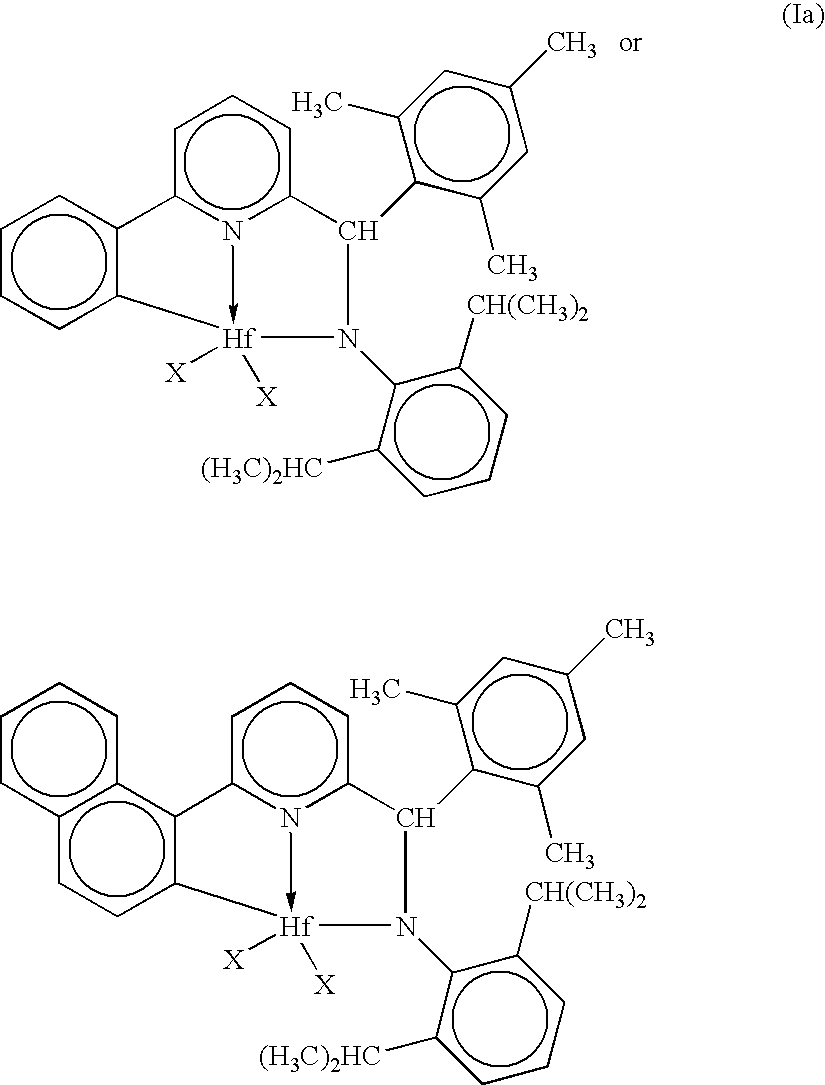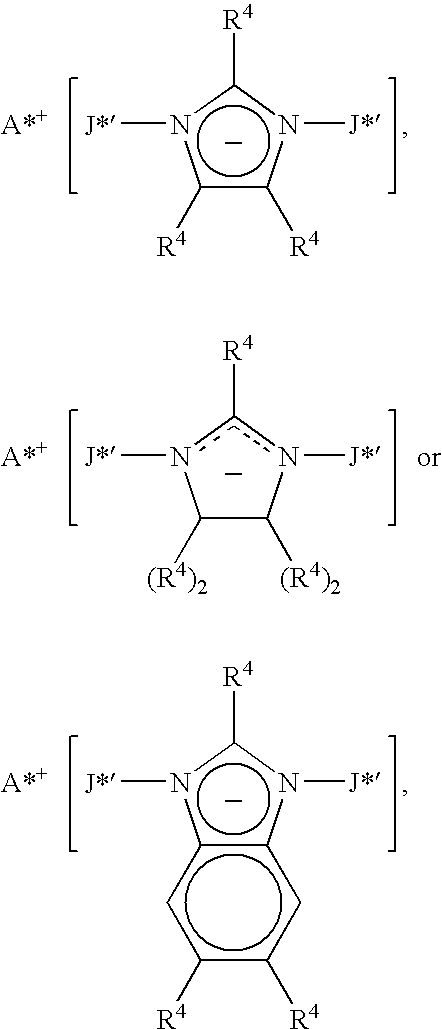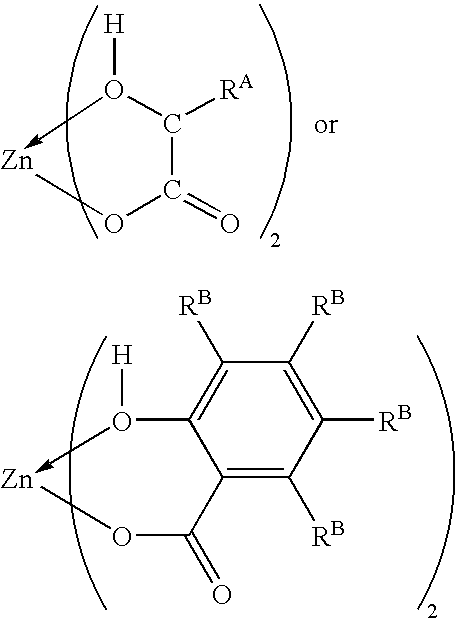High Activity, Low Molecular Weight Olefin Polymerization Process
a polymerization process and low molecular weight technology, applied in the field of group 4 metal complexes, can solve the problems of reduced tacticity or crystallinity of polymers, high stirring force and energy requirements, and common problems, and achieve the effects of low molecular weight (mw), increased toughness, and high isotacticity
- Summary
- Abstract
- Description
- Claims
- Application Information
AI Technical Summary
Benefits of technology
Problems solved by technology
Method used
Image
Examples
specific embodiments
[0155]The following specific embodiments of the invention and combinations thereof are especially desirable and hereby delineated in order to provide detailed disclosure for the appended claims.
[0156]1. A metal complex corresponding to the formula:
[0157]wherein, X is an anionic ligand group, preferably alkyl or alkaryl, more preferably methyl or benzyl; and
[0158]covalent bonds are represented by lines and coordination interactions are represented by arrows.
[0159]2. A metal complex according to embodiment 1 wherein X each occurrence is chloro, methyl, n-butyl, benzyl, or tri(methyl)silylmethyl.
[0160]3. An addition polymerization process wherein one or more olefin monomers are contacted with a catalyst composition under polymerization conditions, characterized in that the catalyst composition comprises a metal complex according to embodiment 1 and a cocatalyst.
[0161]4. A process according to embodiment 3 which is a solution polymerization process.
[0162]5. A process according to embodi...
examples
[0173]The invention is further illustrated by the following Examples that should not be regarded as limiting of the present invention. The skilled artisan will appreciate that the invention disclosed herein may be practiced in the absence of any component which has not been specifically disclosed. The term “overnight”, if used, refers to a time of approximately 16-18 hours, the term “room temperature”, refers to a temperature of 20-25° C., and the term “mixed alkanes” refers to a commercially obtained mixture of C6-9 aliphatic hydrocarbons available under the trade designation Isopar E®, from Exxon Mobil Chemicals Inc. In the event the name of a compound herein does not conform to the structural representation thereof, the structural representation shall control. The synthesis of all metal complexes and the preparation of all screening experiments were carried out in a dry nitrogen atmosphere using dry box techniques. All solvents used were HPLC grade and were dried before their use...
PUM
| Property | Measurement | Unit |
|---|---|---|
| pressure | aaaaa | aaaaa |
| pressure | aaaaa | aaaaa |
| temperature | aaaaa | aaaaa |
Abstract
Description
Claims
Application Information
 Login to View More
Login to View More - R&D
- Intellectual Property
- Life Sciences
- Materials
- Tech Scout
- Unparalleled Data Quality
- Higher Quality Content
- 60% Fewer Hallucinations
Browse by: Latest US Patents, China's latest patents, Technical Efficacy Thesaurus, Application Domain, Technology Topic, Popular Technical Reports.
© 2025 PatSnap. All rights reserved.Legal|Privacy policy|Modern Slavery Act Transparency Statement|Sitemap|About US| Contact US: help@patsnap.com



